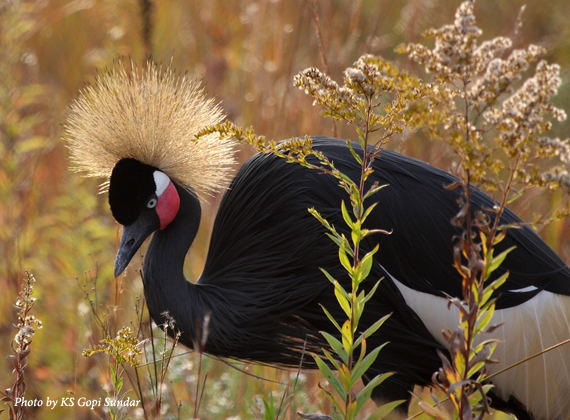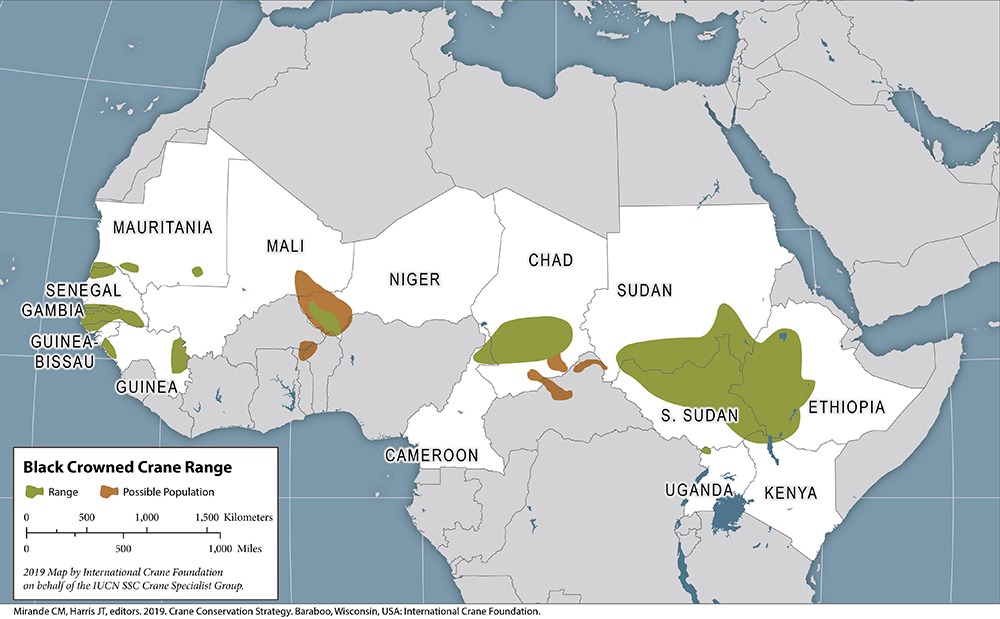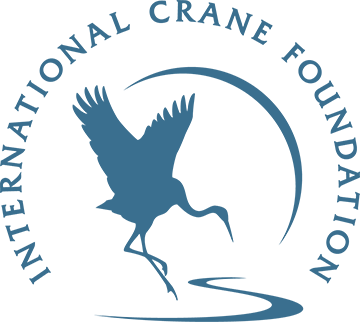
SPECIES: Balearica pavonia pavonina – West African; Balearica pavonina ceciliae – Sudan
HEIGHT: ~ 104 cm, 3 ft
WEIGHT: ~ 3.6 kg, 8 lbs
POPULATION: 43,000 – 70,000
TREND: Decreasing
STATUS: IUCN: VU; Cites Appendix I
IDENTIFICATION
Adults – black body, white wings with feathers ranging from white to brown to gold, head topped with stiff golden feathers, red and white cheek patches (these vary among the subspecies), small red gular sac, black legs, short, gray bill; juveniles – blackish feathers, head cinnamon-brown, no cheek patches, crown spiky and dull gold.
RANGE
Sporadic populations of Black Crowned Cranes are found in eastern Africa, centered in Senegal and Gambia. There is a large population throughout Sudan, South Sudan, Ethiopia and Kenya, with separate populations in Chad and Cameroon. Most populations are found within the Sahel region of northern Africa.

DIET
Tips of grasses, seeds, insects, small mammals, amphibians, reptiles and seeds from agricultural crops.
CALL
Listen to Black Crowned Crane calls:
![]() Unison Call | A duet performed by a pair, to strengthen their bond and protect their territory.
Unison Call | A duet performed by a pair, to strengthen their bond and protect their territory.
THREATS
Habitat loss including desertification, illegal capture for commercial trade, unintentional and intentional poisoning, human disturbance, unsustainable exploitation and conversion of wetlands.
OUR PLAN
Understanding and managing Black Crowned Cranes on their breeding grounds in West and Central Africa. We are:
- Conducting range-wide status surveys to determine the population and distribution of, and threats to, Black Crowned Cranes across West and Central Africa.
- Developing new community-based conservation projects for Black Crowned Cranes linked to the broader wetland management programs in West and Central Africa.
- Securing Black Crowned Cranes in key wetlands across the agricultural landscapes of Ethiopia.
Learn more about Black Crowned Cranes:
